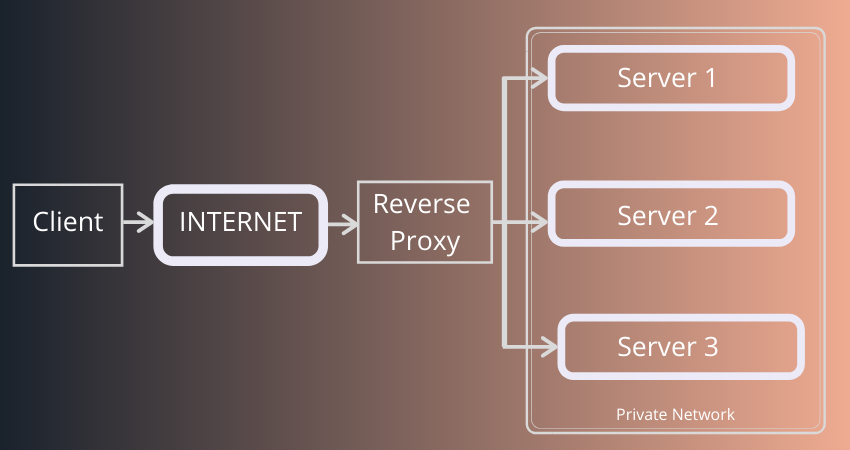Essentially Load Balancer is one of the applications of a Reverse Proxy.
Both reverse proxy and load balancer are key components of the client-server architecture.
A client-server model is basically an application structure that separates between the providers of resources and the ones which are getting the services.
The proxy server makes for a gateway between the web pages and the end-users.
Depending upon the position of a proxy, it is referred to as forwarding proxy or reverses proxy.
Reverse Proxy vs. Load Balancer:
1) Reverse Proxy
Let’s Understand What is Reverse Proxy?
A forward proxy is essentially used by a client and a reverse proxy is used by servers.
Here’s a diagrammatic representation of a Reverse Proxy.
A reverse proxy acts as a server for the users. Each and every request made by a user is directed towards a reverse proxy, thereby acting as an interface for all the servers in the back end.
Some of the Key Benefits of a Reverse Proxy
- Since a reverse proxy plays the role of a server for the users, it hides the topological design of the server-mechanism in the background. It also does away with direct internet access to the servers.
- A reverse proxy acts as a single point of entry for all the HTTP requests.
- The reverse proxy can also act as a Cache, which should mean reduced load on the back-end servers.
- Since a reverse proxy is a gateway between the users and servers, that makes it an excellent point to log and audit all the requests.
Reverse Proxy vs. Load Balancer:
2) Load Balancer
Let’s Go Through What is a Load Balancer?
While going through the benefits of a Reverse Proxy, one comes across load balancing.
The optimal distribution of traffic load across servers is called load balancing.
A load balancer can be a hardware device or a software application that acts as a reverse proxy and maintains the load over the servers by redirecting an adequate amount of traffic towards it.
Load balancers can be categorized as; Layer 4 and Layer 7. Layer 4 load balancer acts upon network and transport layer protocol based data and Layer 7 load balancer deals with application layer protocol based data.
A preset algorithm is configured, according to which these load balancers operate.
Reasoning Behind the Deployment of Load Balancer over a Reverse Proxy
To put it simply, load balancers are usually deployed when multiple servers are involved i.e. the volume of traffic is on the higher side.
When you’re dealing with just a single server, a reverse proxy is more than capable.
A reverse proxy may or may not do load balancing depending upon how you use it, which itself depends upon your needs.
Read More:


